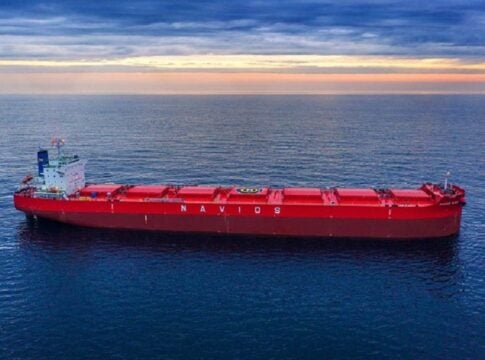1. What was decided on the next ESM loan tranche for Greece?
The Eurogroup welcomed the full staff-level agreement that was reached between Greece and the institutions. Subject to the completion of some remaining prior actions and national parliamentary procedures, the ESM Board of Directors is expected to approve the disbursement of the second tranche of the ESM loan facility amounting to €10.3 billion.
2. When is Greece expected to receive these funds?
The second tranche will be split into several disbursements, the first of which could be made in the second half of June, if Greece meets all the necessary preconditions. The first disbursement would amount to €7.5 billion, to be used for debt service obligations and the clearance of domestic arrears. Subsequent disbursements would be made after the summer. These disbursements will be subject to the completion of milestones.
3. What procedures must be completed for the disbursement to be made?
First, the Greek government must fully implement all the prior actions included in the first review of the programme. Several ESM Member States need to receive approval from their national parliaments for a new loan tranche for Greece. Furthermore, the ESM Board of Governors is expected to approve the supplemental Memorandum of Understanding (MoU) reflecting the staff-
level agreement. Finally, the ESM Board of Directors will have to take the formal decision to disburse funds to Greece.
4. What debt relief measures were agreed by the Eurogroup?
In line with its statement of 9 May, the Eurogroup considered the sustainability of Greek public debt. A number of debt relief measures were agreed, to be implemented in the short, medium and long term. Short-term measures (to be implemented after the first review is completed, up to the end of the programme in 2018):
– Smoothening the EFSF repayment profile
The repayment of certain loan tranches under the EFSF loan facility can be extended within the agreed maximum weighted average maturity of 32.5 years;
– Using the EFSF/ESM diversified funding strategy to reduce interest rate risk
The diversified funding strategy to issue regularly liquid benchmark notes on all parts of the curve will not change. The EFSF/ESM is working on ways to optimise the structure of outstanding debt according to the different loan profiles of our beneficiary Member States. This aims to enable the EFSF/ESM to reduce interest rate risk for Greece without increasing costs for other beneficiary Member States;
– Waiving the step-up interest rate margin related to the debt buy-back loan (disbursed by the EFSF in 2012) for the year 2017:
The margin on this loan was set at an elevated level (200 basis points) to encourage Greece to strengthen its privatisation operations during the EFSF programme. As new mechanisms related to privatisation have been agreed under the ESM programme, the EFSF Board of Directors and EFSF guarantors could authorise this margin to be foregone for the year 2017. Medium-term measures (to be possibly adopted following the successful implementation of the ESM programme in 2018):
– Utilising unused resources from the ESM programme for partial early repayment of official loans
Out of the €25 billion earmarked for bank recapitalisation under the ESM programme, only €5.4 billion was used. The remaining €19.6 billion could possibly be used for partial early repayments of official loans (e.g. bilateral loans from euro area countries under the so-called Greek Loan Facility, or loans from the IMF). Greece would benefit from this as the ESM loans are much cheaper than IMF loans and have a longer maturity.
– Payment of SMP (Securities Markets Programme) and ANFA (Agreement on Net Financial Assets) profits to Greece
Currently the ESM still holds around €1.8 billion of SMP profits from 2014 in a segregated account. This amount and the remaining SMP and ANFA profits from the budget year 2017 onwards will be held by the ESM as a buffer to reduce future gross financing needs for Greece. Euro area central banks (excluding the Bank of Greece) will accumulate around €3.5 billion in profits from holdings of Greek bonds from 2017 to 2026;
– More substantial debt re-profiling on EFSF loans
If necessary, targeted further debt re-profiling measures would be considered, including an extension of the maximum weighted average maturity of loans, re-profiling of the EFSF repayment plan, capping and deferral of interest payments;
– Abolishing altogether the step-up interest rate margin related to the debt buy-back as of 2018;
Long-term measure
– Contingency mechanism on debt
This mechanism would be activated, if needed, after the end of the ESM programme in August 2018 to ensure debt sustainability in the long run in case a more adverse scenario were to materialise; such a mechanism could entail measures such as a further EFSF re-profiling and capping and deferral of interest payments.
5. How do these measures relate to the sustainability of Greece’s debt?
The Eurogroup assesses debt sustainability using a metric called gross financing needs. This is the sum of the overall fiscal deficit plus principal debt payments in a given year, expressed in terms of GDP. Thanks to the debt relief measures envisaged, Greece’s gross financing needs are expected to remain below 15% of GDP during the post-programme period for the medium term, and below 20% of GDP thereafter. This would bring Greece’s very high debt-to-GDP level on a persistently declining path and ensure the long-term sustainability of Greek debt.
6. Will the EFSF/ESM’s diversified funding strategy need to be changed as a result of the debt relief measures?
The diversified funding strategy helps the EFSF/ESM maintain a strategic presence with liquid benchmark bonds on all parts of the curve, and is designed to keep a wide investor base; have market access in different and also difficult market situations, while maintaining a balance between the cost of funding, which is passed on to beneficiary countries, and interest rate risk. This strategy is crucial for the ESM and the EFSF to fulfil their mission and therefore will not change.
7. What will the IMF’s role be?
The IMF’s role is clearly explained in the Eurogroup statement of 25 May 2016: “Against the background of the forthcoming successful completion of the first review and the agreement on debt relief, the Eurogroup welcomes the intention of the IMF management to recommend to the Fund’s Executive Board to approve a financial arrangement before the end of 2016 that will support the implementation of the agreed fiscal and structural reforms. It is recognised that, consistent with IMF policies, approval of this arrangement will also be based on a new debt sustainability analysis (DSA) and the assessment of possible debt relief measures mentioned above. The possible debt relief will be delivered at the end of the programme in mid-2018 and the scope will be determined by the Eurogroup on the basis of a revised DSA in cooperation with the European Institutions for purposes of taking into account the European policy framework, subject to full implementation of the programme.”
8. When was the ESM programme agreed and how much will Greece receive?
The ESM programme was approved by the ESM Board of Governors in August 2015 and will run until August 2018. A total of €21.4 billion was disbursed by the ESM to Greece last year, and the total amount for the whole programme is up to €86 billion. The disbursement of each loan tranche is conditional upon the implementation of reforms by the Greek government. Prior to the ESM, the temporary euro area rescue fund, the EFSF, had disbursed €141.8 billion to Greece, of which €130.9 billion is still outstanding. Together, the EFSF and the ESM are by far the largest creditors of Greece.














